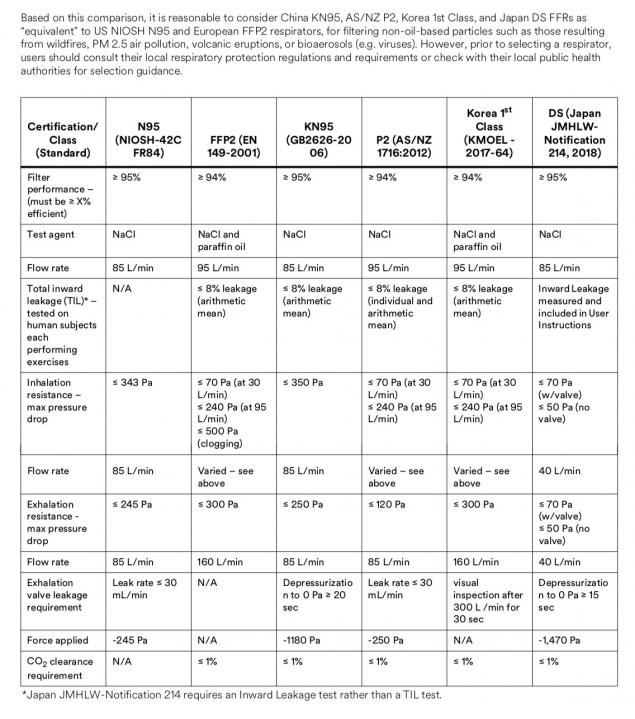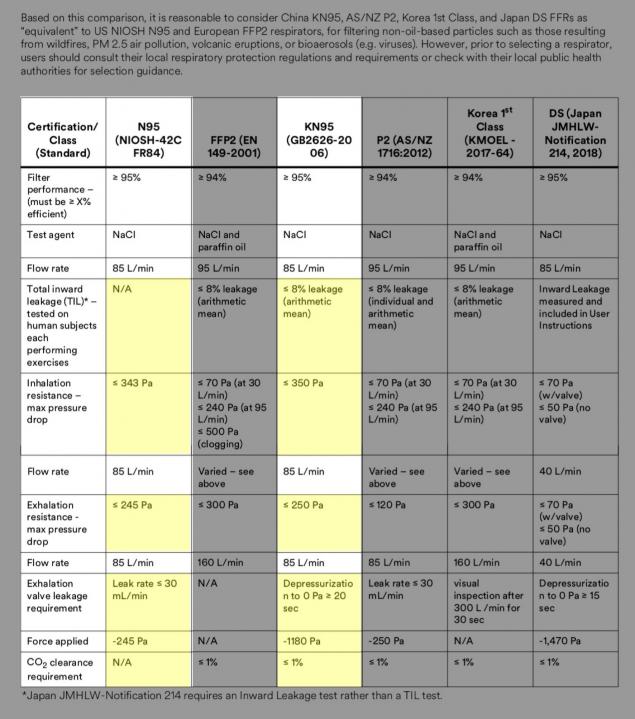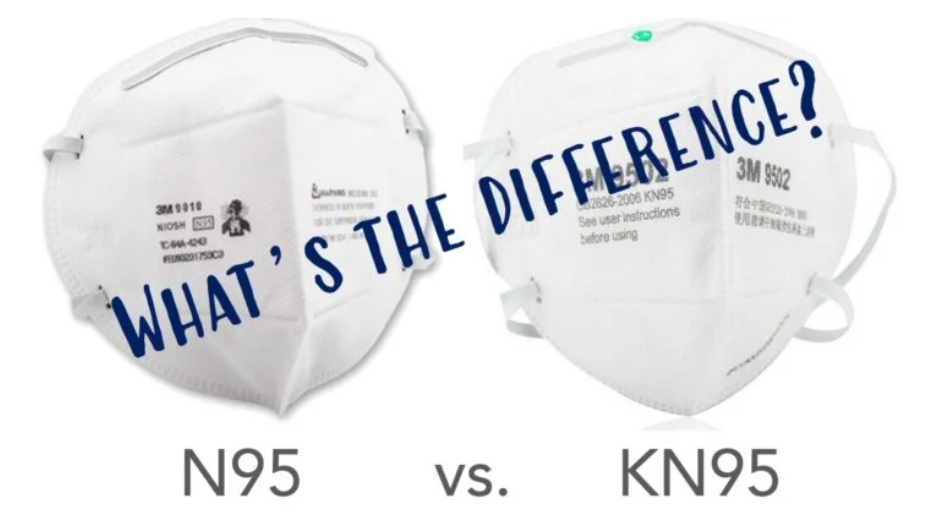by Thomas Talhelm, Earnest Supply
With such similar sounding names, it can be confusing to understand the difference between N95 and KN95 masks. What are KN95 masks, and are they the same as N95 masks? This handy chart explains the similarities and differences between these two essential pieces of personal protective equipment.
In short, N95 masks are the standard for respirator masks in the United States; KN95 masks are the Chinese standard. According to mask manufacturer 3M, “it is reasonable to consider” China’s KN95s “equivalent” to US N95s. Mask standards for Europe (FFP2), Australia (P2), Korea (KMOEL), and Japan (DS) are also highly similar.”
N95 vs. KN95 Comparison Chart

Source: 3M
N95 vs. KN95: What’s The Same?
Lots of users care most about what percentage of particles the masks capture. On this metric, N95 and KN95 respirator masks are the same. Both masks are rated to capture 95% of tiny particles (0.3 micron particles, to be exact).
Since N95 and KN95 masks are rated to capture 95% of 0.3 micron particles, people will often assume that masks can’t capture particles smaller than 0.3 microns. If that were true, then it wouldn’t make sense that masks do a really good job of preventing virus transmission.
The crazy reality is that particles smaller than 0.3 microns are actually easier to capture. Don’t believe us? Then believe the data. Here’s the science behind it.
Difference Between N95 vs. KN95 Masks
Both ratings require masks to be tested for filtration efficiency at capturing salt particles (NaCl). Both are tested at a flow rate of 85 L/minute. However, there are some differences between N95 and KN95, highlighted below.

Most of these differences are small and would be uninteresting to the average mask user. However, here are the key differences:
- To be certified as a KN95 mask, the Chinese government requires the manufacturer to run a special mask fit test on real humans with ≤ 8% leakage. The N95 mask standard does not require manufacturers to run fit tests.This does not mean that fit tests aren’t helpful. Many hospitals and companies require their workers to be fit-tested. However, those are requirements of companies themselves, not for the U.S. National Institute on Occupational Safety & Health to certify the mask.
- N95 masks have slightly stricter requirements for pressure drop while inhaling. That means they’re required to be slightly more breathable than KN95 masks. Don’t worry; despite it sometimes feeling difficult to breathe through masks, dying from oxygen starvation is very unlikely when wearing a mask. In fact, even slight drops in oxygenation are rare.
- N95s also have slightly stricter requirements for pressure drop while exhaling, which should help with breathability.
Bottom Line: The Difference Between N95 vs. KN95 Masks
N95s and KN95s are both rated to capture 95% of particles. Among the minor differences, only KN95 masks are required to pass fit tests, while N95 masks have slightly stronger breathability standards.
Earnest Supply can be reached by emailing Greg Todtman.

